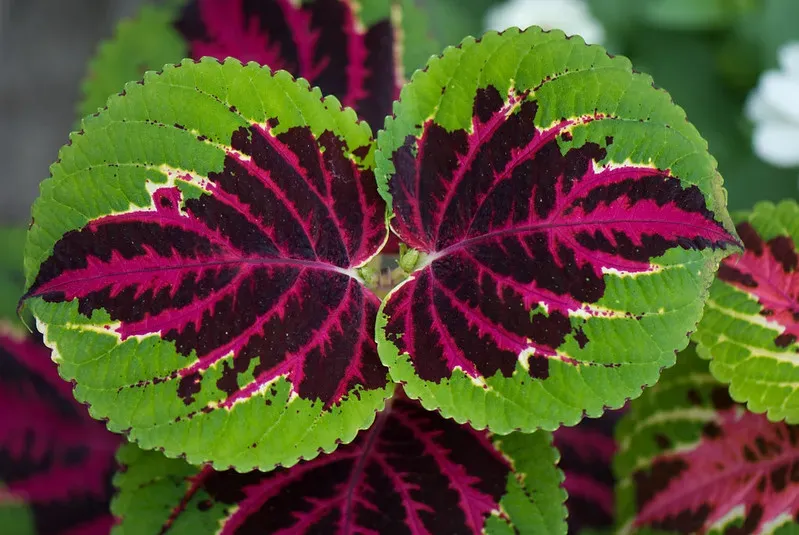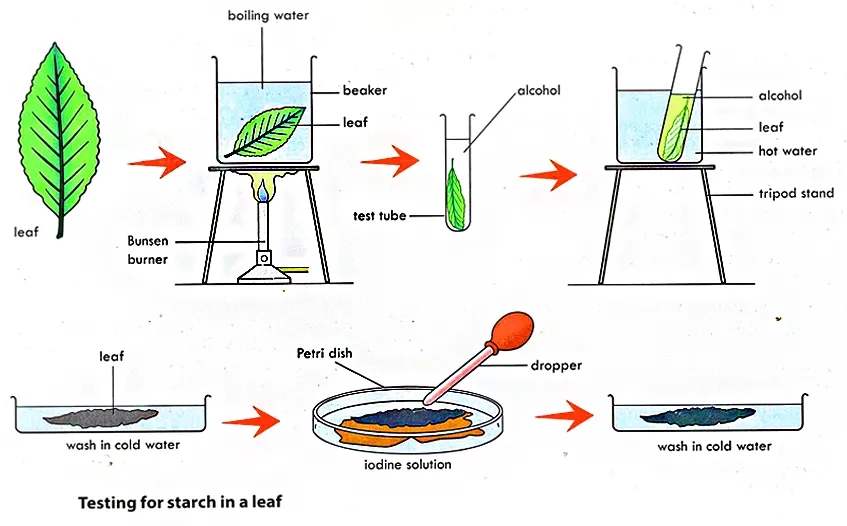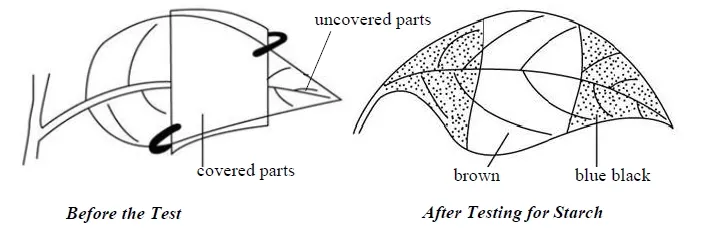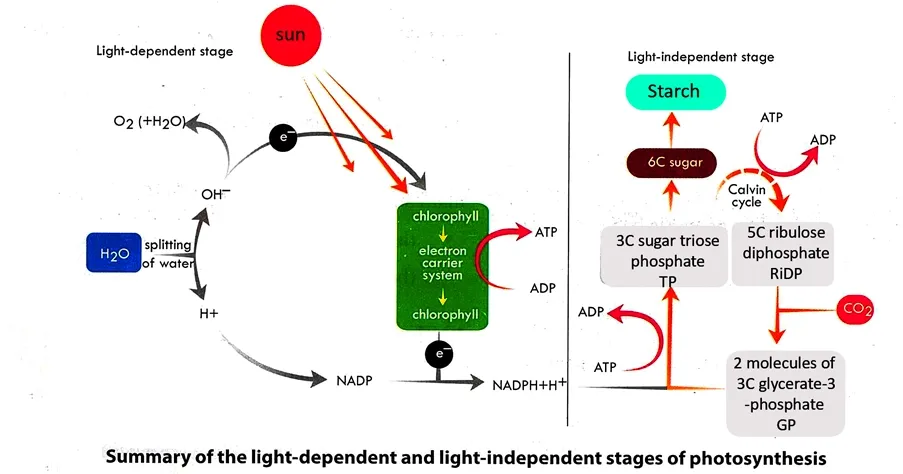Photosynthesis Explained: The Essential Process for Plant Growth and Energy Production
Objectives
This blog post provides readers with the following objectives. The reader will be able to:
PHOTOSYNTHESIS
Photosynthesis is the process by which chlorophyll containing organisms (i.e., plants and algae) synthesize complex organic molecules (such as glucose) from simple inorganic substances (such as carbon dioxide and water) in the presence of light. Oxygen is given out as a by-product.
Photosynthetic organisms e.g., plants, algae are referred to as photoautotrophs. Photosynthesis goes on principally in the leaves, or through any given part of the plant that can photosynthesize. However, the leaf is the main photosynthetic organ. Sunlight is absorbed by chlorophyll, a green pigment located in the chloroplasts.
The
overall chemical reaction is
6CO2 + 6H2O → C6H12O6 + 6O2
Requirements for Photosynthesis
1. Carbon dioxide and water (as raw materials for photosynthesis)
2. Chlorophyll and sunlight (as conditions for photosynthesis).
Importance of Photosynthesis
1. Provides food for animals.
2. The plants depend on the glucose for their growth and energy.
3. It replenishes oxygen content of the atmosphere.
4. It produces materials for protein and lipids formation.
5. Forms the base for food chains and food webs.
6. Provides oxygen as substrate for respirations.
7. It prevents greenhouse effects by to remove carbon dioxide from the atmosphere.
Adaptations of Leaf for Photosynthesis
1. Presence of impervious cuticle layer presents water and carbon dioxide from the leaf.
2. Upper epidermis is a single layer of cells on the upper surface of a leaf. It allows light to pass to the mesophyll cells.
3. The cells of palisade layer are vertically arranged immediately below the epidermis to ensures maximum light absorption.
4. Chloroplasts contain chlorophyll for absorbing sunlight.
5. The presence of network of veins allows water to reach the photosynthetic cells.
6. Presence of stomata allows carbon dioxide to enter into the leaf.
7. The leaf is thin to ensure easily diffusion of carbon dioxide and easy penetration of light into the mesophyll cells.
8. The broad and flat lamina provides a large surface area for absorption of sunlight.
9. Presence of air spaces in the spongy mesophyll allows diffusion of carbon dioxide into the palisade cells.
Experiment on Photosynthesis
Experiment I: Testing for Starch in a Leaf
Aim: To test a leaf for starch in a leaf
Apparatus and
Materials
Beaker, boiling tube, heat source, Iodine solution, ethanol, water and a green leaf.
Procedure
Half fill a beaker with water and boil the water.
Pluck a healthy green leaf of a plant which was in the sunlight.
Place the leaf in boiling water for one or two minutes. This denatures the enzymes and stops chemical reactions.
Now transfer the leaf to a beaker containing alcohol.
Warm it over a water bath for a few minutes to remove the chlorophyll from the leaf. The leaf becomes decolorized.
Dip the leaf in water to remove the alcohol, soften and make it permeable.
Add iodine solution to the leaf surface.
Observation and Conclusion: The treated leaf after two to three minutes will turn blue-black. This indicates the presence of starch.
Experiment II: Showing that Carbon Dioxide is Necessary for Photosynthesis
Aim: To show that carbon dioxide is necessary for photosynthesis.
Apparatus and Materials
Two potted plants, polythene bags, two bell jars, concentrated sodium hydroxide solution (Soda lime), Iodine solution, water, soda lime.
Procedure
Place two potted plants in the dark for 24 hours to destarch the leaves. Pluck a leaf from the plant and test it for starch. is there any starch in the leaf?
Enclose one leaf in a conical flask labelled A, containing soda lime, and another leaf in another conical flask containing labelled B, without soda lime. Pass the leaf stalk through a split cork which has been grease to keep the flask air tight.
What is the role of the soda lime in flask A? Why should the flask be air tight?
Support each flask with a clam. place the plant in sunlight for about 3 hours. Remove the leaves from the flasks and test each for starch. record our observation in each case.
Observation: Only the leaf (one without KOH or soda lime ) will turn blue-black showing the presence of starch. This happens because KOH absorbs the CO2 present inside one bell jar. As a result, the leaves do not get CO2 for photosynthesis.
Conclusion: Carbon dioxide is necessary for photosynthesis.
Experiment III: Showing that Oxygen is given off during Photosynthesis
Aims: To show that oxygen is given off during photosynthesis.
Apparatus and materials: -
Beaker, short stemmed funnel, two thick wooden cubes or plasticine support, sodium hydrogen carbonate powder, test tube, water plant e.g., Elodea or Spirogyra, can be used too, glowing splint.
Procedure
Water plant is placed in a beaker of water covered with a funnel.
The funnel is placed on a support (wooden cubes) to allow free circulation of air and water.
Small amount of NaHCO3 is added to ensure sufficient supply of CO2 for photosynthesis.
A test-tube filled with water is inverted over the funnel
The set-up is placed in sunlight for about 3 hours.
Control experiment is set-up and placed in a dark cardboard for about 3 hours
Observations
Bubbles of gas were observed in the test tube of the experimental set-up. No bubbles of gas were observed in the control. The gas was tested with glowing splint which was rekindled into flames.
N/B; one property of oxygen is it supports burning.
Conclusion: Oxygen is given off during photosynthesis
Experiment IV: Showing that Chlorophyll is Necessary for Photosynthesis

Example of Variegated Leaves

Apparatus and Materials
Plant that has variegated leaves, ethanol, beaker, boiling tube, water, heat source, Iodine solution.
Procedure
Detach a leaf from a variegated plant, which has been exposed to sunlight for 2-6 hours.
Make a labelled diagram of the leaf to show the green and non green parts.
Test the leaf for starch.
Make a labeled diagram to show the results.
Observation: The green parts (containing chlorophyll) will turn blue-black while the non-green parts (lacking chlorophyll) will stain with the color of iodine (orange- brown).
Conclusion: Starch is made only in areas of the leaf with chlorophyll, showing that chlorophyll is necessary for photosynthesis.
Experiment V: Showing that Light is Necessary for Photosynthesis
Aim: To show that light is necessary for photosynthesis.
Apparatus and Materials
Well-watered potted plant, dark paper, scissors / knife, scalpel, pins
and clips
Procedure
On one of the leaves, stick black paper strips (one below and one above the leaf) with the help of clips. Make a sketch of the leaf showing the covered and uncovered parts.
Now, place this plant in sunlight for a few hours. Pluck the leaf, remove the black strips and test for the presence of starch.
Make a labeled diagram to show the results.
Observation: The entire leaf will turn blue-black except in the region that had been covered. This region did not receive light and hence no starch is present.
Conclusion: Starch is produced only in areas that received light, showing that light is necessary for photosynthesis.
Factors Affecting Rate of Photosynthesis
There are three major factors that affecting the rate of photosynthesis; Light intensity, Carbon dioxide concentration, and Temperature
These three factors are called Limiting Factors. A slight
change in a limiting factor can have an adverse effect on the rate
photosynthesis.
Other factors include; chlorophyll concentration, water and
pollution
Temperature
The stages of photosynthesis require enzyme activity. Temperature greatly affects enzymes activities. The rate of photosynthesis increases with increasing temperature. Temperatures ranging near 0oC deactivate the enzymes affecting photosynthesis. Similarly, very high temperatures about 400C, denature the essential enzymes prohibiting photosynthesis. The ideal temperature range is 25 to 35oC.
Light Intensity
Light is needed for the light dependent stage of photosynthesis. The rate of photosynthesis increases linearly with increasing light intensity until it reaches its saturation point. At this point, the rate of photosynthesis remains constant. Too much light at a high intensity can damage chloroplasts.
Light quality
Light is a combination of different wavelengths or colors. Photosynthesis occurs only in the visible spectrum, i.e., wavelength which ranges from about 400 nm to 750 nm. The rate of photosynthesis is most rapid in the red (700 nm) and blue rays (400 nm). The graph below shows how much light is absorbed by chlorophyll at each wavelength of light.
Chlorophyll Concentration
Chlorophyll affects the rate of reaction as it absorbs the light energy. Lack of chlorophyll (or deficiency of chlorophyll) results in chlorosis or yellowing of leaves. It can occur due to disease, mineral deficiency or aging (senescence).
Carbon Dioxide Concentration
In the atmosphere, the concentration of carbon dioxide ranges from 0.03 to 0.04 %. It is found that 0.1% of CO2 increases the rate of photosynthesis significantly. This is achieved in the greenhouses which are enclosed chambers where plants are grown under controlled conditions. The concentration is increased by installing gas burners which liberate carbon dioxide as the gas burns. Crops like tomatoes, lettuce are successfully grown in the greenhouses. Greenhouse crops are found to be better-yielding than those growing in natural conditions.
Water
Water is an essential factor in photosynthesis. A slight deficiency of
water reduces crop yield. It also limits the quantity of carbon dioxide. This
is because drying the leaves close their stomata in order to conserve water
which in effect prevent carbon dioxide from entering the leaves.
Pollution
Soot, like ozone and sulphur dioxide have an adverse effect on photosynthesis. Soot normally blocks stomata and reduce the transparency of the leaves. Pollution of water affects the hydrophytes. The capacity of water to dissolve gases like carbon dioxide and oxygen is greatly affected.
Biochemical Nature of Photosynthesis
Photosynthesis has two main stages or reactions: Light reaction (Light Dependent Reaction) and Dark reaction (Light Independent Reaction). The light reactions occur in the grana and the dark reactions take place in the stroma of the chloroplasts.
Chloroplast and Chlorophyll
Chloroplasts are double membrane
organelles with an inner membrane folded into disc-shaped sacs called thylakoids. Thylakoids, containing
chlorophyll and other accessory pigments, are in stacks called granum
(plural: grana). Grana are connected to each other and surrounded by a gel-like
material called stroma.
Chlorophyll is a light-absorbing pigment in plant cells. There are two types of chlorophyll: chlorophyll a and chlorophyll b. They absorb light in the red and blue wavelengths, making the plants leaf look green.
Light Reaction
The light reaction or stages of photosynthesis occurs in the grana of the chloroplast.
The chlorophyll molecules in the grana trap energy in the sunlight. The chlorophyll molecule becomes excited or ionized and electrons are transferred through a number of electron carriers or acceptors but finally return to the chlorophyll molecule to stabilize it.
During the electron transfer, energy is released which combine ADP and inorganic phosphate to form ATP (Adenosine triphosphate).
Light energy also split water molecules into hydrogen ion and hydroxyl ions in a process called photolysis of water or photochemical splitting of water.
The oxygen is evolved as by-product into the atmosphere.
The hydrogen ions are converted into hydrogen atoms which are used to reduce NADP (nicotinamide adenine dinucleotide phosphate) to NADPH2.
2NADP + 4H+ + 4e- → NADPH2
Using light energy to combine inorganic phosphate (Pi) to Adenosine diphosphate (ADP) to produce Adenosine triphosphate ATP is referred to as Photophosphorylation.
Dark Reaction (Calvin Cycle)
It involves the reduction of carbon dioxide using reduced NADP and ATP produced in the light-dependent reactions of photosynthesis.
It takes place in the stroma of the chloroplast. It was discovered by Melvin Calvin, James Bassham, and Andrew Benson at the University of California.
There are 3 stages to this process: Carbon dioxide fixation, Carbon dioxide reduction and Ribulose bisphosphate regeneration.
Carbon Dioxide Fixation
This process is called fixation because atmospheric carbon dioxide is converted into an organic compound.
Carbon dioxide combines with ribulose bisphosphate, RuBP (a 5 carbon compound) to form an unstable 6 carbon compound by enzyme ribulose bisphosphate carboxylase (Rubisco).
The unstable 6-carbon compound splits into two molecules of a 3-carbon compound called glycerate-3-phosphate.
For every 6 molecules of CO2 entering the cycle, 12 molecules of glycerate-3-phosphate are produced.
Carbon Dioxide Reduction
Glycerate-3-phosphate is reduced into phosphoglyceraldehyde or triose phosphate using NADPH2 and ATP produced in the light stage.
Two molecules of triose phosphate are removed from the cycle, to be converted into glucose or fructose.
Glucose is also the monomer used in the synthesis of polysaccharides (e.g. starch).
Ribulose Bisphosphate Regeneration
In a series of complex reactions, the remaining molecules of triose phosphate are converted into 5-carbon compound ribulose monophosphate.
Ribulose monophosphate is converted into ribulose bisphosphate, using a phosphate group from ATP.
Fate of Products of Photosynthesis
The main product of photosynthesis is glucose and oxygen.
1. Glucose is used up by actively respiring cells during respiration to release energy.
2. Together with nitrates, sulphates and phosphates, glucose is used in the synthesis of amino acids which combined to form proteins.
3. Glucose can be used in the formation of fats.
4. Some of the glucose may be converted to sucrose or starch and stored in storage organs like the seeds, bulbs, tuber and fruits.
5. Oxygen, by-product may be used by the cells in respiration. The excess passed out through the stomata.












